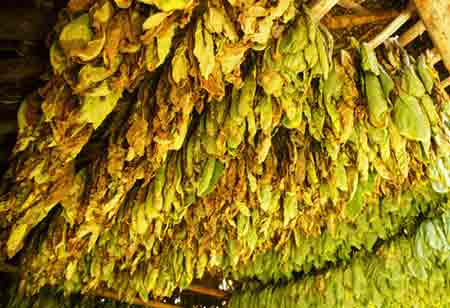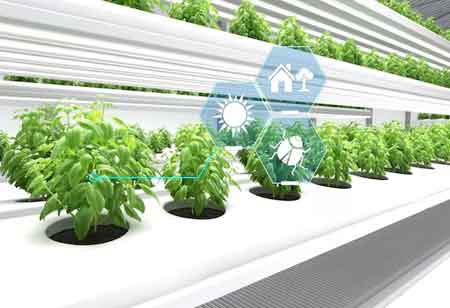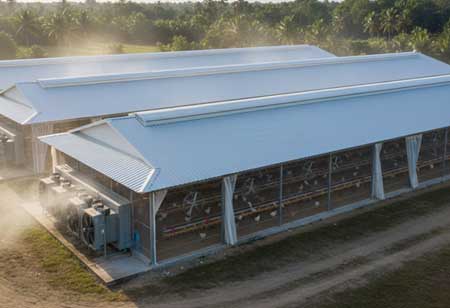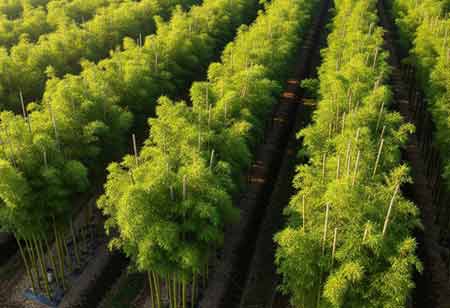Thank you for Subscribing to Agri Business Review Weekly Brief
Microalgae as a Strategic Input in Climate-Smart Agriculture
Microalgae contribute to climate-smart agriculture by enhancing productivity, sequestering carbon, improving soil health, and providing sustainable nutrient supply, while adapting to diverse environments without competing for arable land.

By
Agri Business Review | Thursday, September 04, 2025
Stay ahead of the industry with exclusive feature stories on the top companies, expert insights and the latest news delivered straight to your inbox. Subscribe today.
The convergence of global population growth, climate change, and the need for sustainable food production has catalyzed the emergence of "climate-smart agriculture." This comprehensive methodology aims to enhance productivity and revenue, foster resilience to climatic fluctuations, and mitigate greenhouse gas emissions, all while ensuring food security. Central to this transformative paradigm is a potent, albeit frequently undervalued, strategic resource: microalgae. These minuscule photosynthetic organisms are poised to fundamentally alter agricultural practices, presenting a multifaceted resolution to some of the most formidable challenges confronting contemporary agriculture.
The Carbon Sequestration Potential of Microalgae
One of the most profound contributions of microalgae to climate-smart agriculture is their exceptional capacity for carbon sequestration. As primary producers, microalgae are highly efficient at capturing atmospheric carbon dioxide through photosynthesis. Their photosynthetic efficiency can be significantly higher than that of terrestrial plants, and they can be cultivated in controlled systems that optimize carbon dioxide absorption. This ability to directly fix carbon from the atmosphere makes microalgae a living carbon sink. When their biomass is integrated into agricultural systems, it can effectively store carbon in the soil for the long term. This process not only helps mitigate climate change by removing a significant greenhouse gas but also enriches the soil, enhancing its overall health and productivity. The biomass produced from this carbon capture can be used for a variety of purposes, including direct application to fields as a soil amendment or as a feedstock for the production of biochar, a stable form of carbon that further aids in soil carbon retention.
Enhancing Soil Health with Microalgal Biofertilizers
Beyond their role in carbon sequestration, microalgae act as powerful biofertilizers and biostimulants, transforming soil health and nutrient cycling. They are rich in essential macro- and micronutrients, including nitrogen, phosphorus, and potassium, as well as a variety of vitamins and minerals. When applied to the soil, the microalgal biomass decomposes, releasing these nutrients in a slow, steady manner that plants can easily absorb. This stands in stark contrast to the rapid and often inefficient release of nutrients from synthetic fertilizers, which can lead to nutrient runoff and water pollution. Furthermore, particular species of microalgae, such as cyanobacteria, possess the unique ability to fix atmospheric nitrogen, converting it into a form that is directly available to plants. This natural nitrogen fixation reduces the reliance on energy-intensive synthetic nitrogen fertilizers, which are a significant source of greenhouse gas emissions.
In addition to their role as nutrient sources, microalgae produce a wide range of bioactive compounds that act as biostimulants. These include phytohormones like auxins and gibberellins, polysaccharides, and amino acids. When these compounds are introduced into the soil or applied directly to plants, they promote vigorous growth, enhance root development, and increase a plant's tolerance to various environmental stresses, such as drought, salinity, and extreme temperatures. By strengthening the plant's natural defenses and physiological processes, microalgae contribute to the development of more resilient crops that can withstand the unpredictable conditions associated with a changing climate. The presence of microalgae in the soil also fosters a healthier and more diverse soil microbiome, creating a beneficial ecosystem that supports plant vitality and reduces the need for synthetic inputs.
The cultivation of microalgae offers a distinct advantage in that it does not compete with traditional agriculture for arable land or freshwater resources. Microalgae can be grown in diverse environments, including open ponds and closed photobioreactors, and can thrive in non-potable water sources such as brackish water, seawater, and even wastewater. This adaptability enables their production in areas unsuitable for conventional farming, thereby minimizing land-use conflicts and maximizing resource efficiency. Moreover, integrating microalgae cultivation with wastewater treatment provides a circular economy model, where agricultural or municipal wastewater, rich in nitrogen and phosphorus, can serve as a nutrient source for microalgal growth. The microalgae, in turn, purify the water by assimilating these nutrients, and the resulting biomass can then be used in agriculture, closing the loop and creating a more sustainable system.
Microalgae in Integrated Farming Systems
The versatility of microalgae extends to their potential as a sustainable source of animal feed and a component of integrated farming systems. Microalgae biomass is a complete nutritional source, rich in protein, lipids, and carbohydrates, making it an ideal supplement or substitute for conventional protein sources like soy or fishmeal. Using microalgae in animal feed can improve animal health and productivity while reducing the environmental footprint of livestock farming. Furthermore, in integrated systems like aquaponics, microalgae can play a crucial role by purifying the water for fish and providing a nutrient-rich feed source for them. In contrast, the wastewater from the fish provides nutrients for the algae. This symbiotic relationship creates a highly efficient, closed-loop system that exemplifies the principles of climate-smart agriculture.
The strategic incorporation of microalgae into agricultural frameworks signifies a foundational transformation towards a more sustainable and robust paradigm for food production. By harnessing their distinctive biological attributes—ranging from efficient carbon sequestration and nutrient cycling to the development of biostimulants and their capacity for adaptation across diverse environments—microalgae provide a potent tool for addressing the complex challenges inherent in contemporary agriculture. Their contribution to enhancing soil vitality, reducing the need for synthetic inputs, and promoting a circular bioeconomy firmly establishes them as a pivotal element of future agricultural advancements, thereby charting a course toward a more reliable and climate-resilient global food supply infrastructure.





